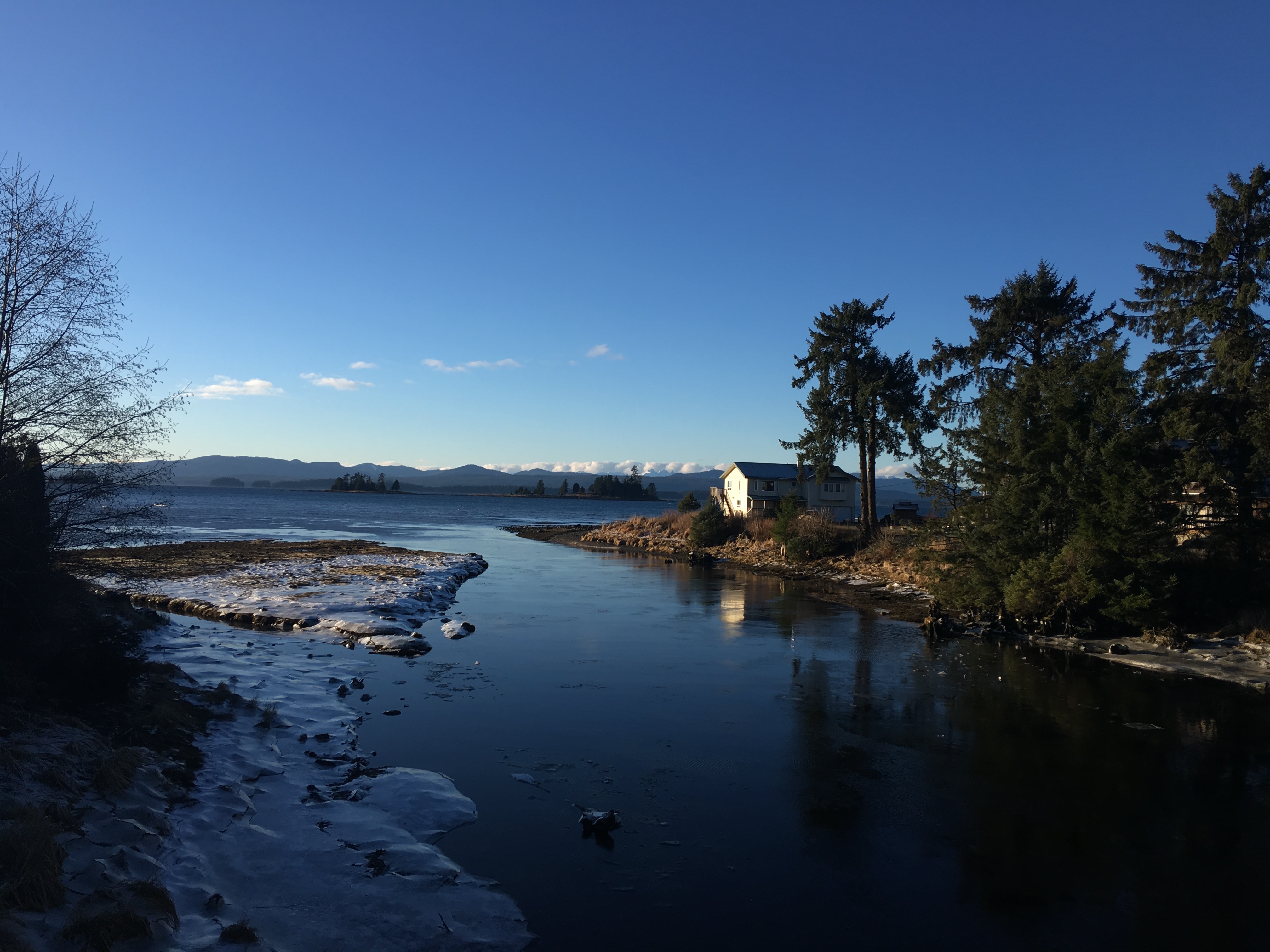
Omar leans forward, his face is animated as he talks about his life in Morocco. When he first started telling his story, however, his arms were crossed and he offered sparse details. He left Cameroon at age 14 on foot, and began traveling north, through Nigeria and Algeria. The lush garden seemed a stark contrast to his journey across the Sahara desert and two years of wandering. However, it seems Omar has found safety in Morocco, He has friends, a place to live and the occasional odd job. It is easy to imagine that walking from Cameroon to Morocco was the most difficult part of his life. However, arriving in Morocco brought a new set of challenges that are harder for him to escape.
According to the UN Refugee Agency (UNHCR), Morocco began receiving more immigrants after the Syrian civil war began in 2014. Now, almost 8,000 refugees are living in Morocco, mostly from Syria, Yemen, Cameroon, Ivory Coast, and other Sub-Saharan African countries. Additionally, the International Organization for Migration (IOM) estimates there are almost 100,000 migrants living in Morocco.
The country struggles to provide good opportunities for those who find themselves in Morocco. The World Bank estimates unemployment to be around 10 percent, and jobs in urban areas are especially hard to find. Additionally, both refugees and social workers say the language barrier and religious and racial discrimination can make it difficult to integrate.
For many people who have traveled hundreds or thousands of miles looking for opportunity, then, Morocco is not the promise land they imagined.
The term migrant can refer to anyone who enters another country, but people have to go through an official process to be declared a refugee. They must submit a claim to the government and prove they are fleeing their home country due to fear of war, violence, or persecution.
Omar, who did not provide his last name, left Cameroon because of the violence caused by the insurgent group, Boko Haram, as 160,000 other people have since 2014. He says his father died when he was little and since leaving Cameroon, he has not heard from his mother and little brother. He still does not know what happened to them. He is only 16 years old.
As he walked northwards, he found other individuals traveling and joined them. His goal was not necessarily to reach Morocco, he says, just to leave Cameroon and find a new place where he could study or work. He first went to Nigeria, then Algeria. He says he was able to find some odd jobs in Algeria, but the language barrier and lack of opportunity made life hard, and he kept moving. He travelled for two years and eventually made it from his home in Cameroon to Morocco, roughly the same distance between Los Angeles and New York City.
When refugees arrive in Morocco, their first stop is usually UNHCR, which has an office in the middle of Rabat, the capital. Behind an imposing concrete wall, across a garden path and past numerous cats lazing in the sun lies the half dozen or so interview rooms.
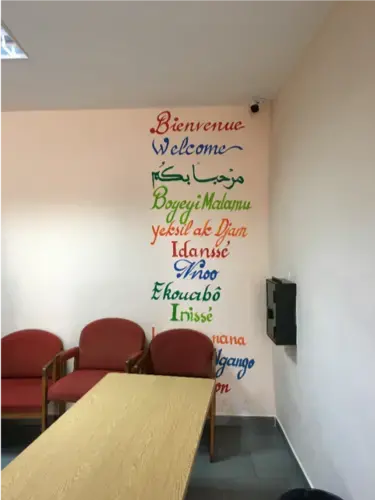
“The waiting room was recently painted,” says Gosia Courtay, motioning to the figures of Mickey Mouse and other cartoon characters decorating the wall. Courtay has worked with UNHCR in Rabat for over two years as an external relations officer. She points to where the word “welcome” runs down the face of a wall, translated in many different languages. This waiting room is where people sit, thousands of miles between them and their homes, waiting for their interviews. After submitting a claim, providing their personal information, and finishing interviews, they wait to see whether UNHCR will give them a stamp of approval, and pass their information to Morocco’s Bureau of Refugees and Stateless People. The Bureau can legally declare them a refugee and grant them a refugee card, while UNHCR acts as a first screen for the Moroccan government.
“If people are rejected as refugees,” Courtay explains, “they can go to organizations who help migrants, such as IOM. They can give them money to set up a business in their home country or money to go back home.” People can also appeal the UNHCR’s decision and go through the process again.
Smartly dressed, and with a decisive step, Courtay leads the way to one of the empty interview rooms. She moved to Morocco over two years ago to begin working at UNHCR’s Rabat office. The chance to help people who have been through so much is incredibly rewarding, even if some days are hard, she says.
She opens the door to the small interview room and explains that refugee status is dependent on the country. People who are considered refugees in Morocco are not necessarily considered so in Mali. Other UNHCR offices can look up fingerprints and information through the database to see if someone has previously been declared a refugee, but the individuals still have to go through this process.
Since 2015, Courtay says, UNHCR has had to adapt the way it operates. Registered refugees are now living in 52 locations across the country, not just in the major cities. UNHCR has had to decentralize their services. Instead of working with organizations who only offer healthcare and financial assistance to people living in Casablanca or Rabat, they have forged new partnerships with organizations to make sure refugees across the country can receive the aid they need.
Currently, UNHCR is closely partnered with at least six organizations that cover a gamut of resources from legal help, health care, human rights protection, and socio-economic development. One of these organizations is Foundation Orient-Occident. Focusing on migration, community development, and cross-cultural exchange, it receives close to 200 asylum seekers and refugees every month. The center in Rabat has social workers, some of whom work particularly with unaccompanied minors or survivors of sexual violence or assault.
The social workers spend time with refugees and focus on listening to their stories to understand their needs. They want to know if they have young children, health issues, or anything else that might require special resources. Additionally the Foundation offers vocational courses, language classes, and other resources. With beautiful gardens in the center of Rabat, the Foundation feels like an oasis and plays the role of a community center, library, art space, and cafeteria.
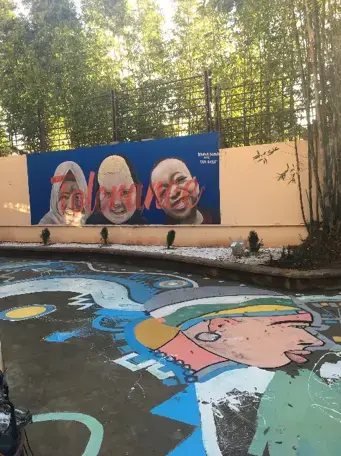
Omar heard about the Foundation through UNHCR. The same is true of Al-Aziz, a 19-year-old from Niger who also only used one name. Since coming to the Foundation, he has taken a culinary class as well as German, Spanish, English, and Arabic classes.
“The more languages I know, the more opportunities I’ll have,” he says. He already speaks fluent French, which is a common language in Morocco, but he does not speak fluent Arabic.
This is a common problem for Sub-Saharan refugees. Legally, they have access to Moroccan public schools, but all the classes are taught in Arabic, which is not a common language in places like Niger, Cameroon, or the Ivory Coast. Without a working knowledge of Arabic, they cannot attend. Private schools often have classes in French, but they are expensive, and neither refugees nor the Foundation can pay for people to study there.
Nevertheless, Al-Aziz is optimistic. He talks about wanting to be an actor one day, and he is constantly looking for opportunities to learn. But underneath the optimism, he seems weary. While Omar exhibited a fiery frustration, Al-Aziz spoke slowly and thoughtfully. Most of the time, he sat with his hands folded in his lap. As he was talking, he occasionally adjusted his large white knit hat, hands returning to his lap again. His eyes looked tired. He wants the chance to learn, he says, to improve his situation; and he wishes the Foundation had more in-depth trainings, although it is difficult to know if that would really help. While he did take the six-month-long culinary class, it has not led to a long-term job. For now, he works odd jobs wherever he can find them.
“Finding a home was my first priority,” he says, but scraping enough money together to pay rent is tough. Omar agrees. He found an apartment and splits rent with a friend. Sometimes the kitchen at the Foundation is his only source of food. “It’s ok if I just drink water at home as long as I have a place to stay,” he says. Omar saves his money to pay for rent, but sometimes jobs are scarce. He hates asking for money on the street, but sometimes he has to.
While taking the vocational classes, Foundation Orient-Occident pays students a stipend and covers their transportation costs. However, after the class is over, the financial support ends. The stipend is helpful, but temporary. They need something more permanent, and Omar thinks he has found a solution.
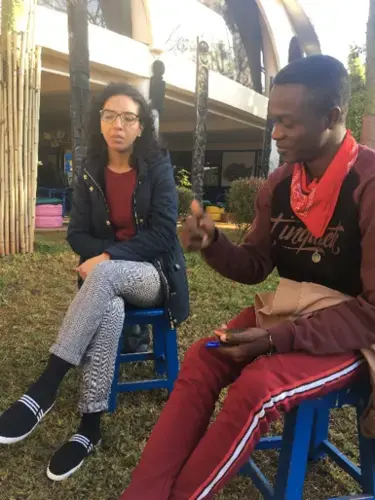
Crouching on a short blue stool, the bracelets on his wrist jingled as he leans in, holding up his phone with an Instagram post of ceramic mugs he made in class. His eyes are bright. “I want to start an art collective with my friends and sell them on the street,” he says. He’s not quite sure how to go about it—he does not have enough money yet—but he is hopeful that if it works, he could make enough money to leave Morocco.
“I’m not accepted here,” he says, describing how he has been spit upon and called names. At different times, both he and Al-Aziz traveled north to the port city of Tangier where one can see Spain in the hazy distance, roughly 20 miles across the Strait of Gibraltar. Many migrants and refugees wend their way northward, hoping to cross into Spain either by land or by water.
There are two enclaves of Spanish territory, called Ceuta and Melila in the northernmost part of Morocco. They are about 45 and 200 miles away from Tangier, respectively. People often try to cross the border fence into one of these two cities, which has led to increased tension and violent confrontations with the Moroccan police forces who try to prevent them from crossing.
Omar and Al-Aziz tried the other option: piloting a boat across the Mediterranean Sea. The journey is often tenuous, boats filled over capacity, and there is minimal safety equipment. Al-Aziz pulls up a picture of people whitewater rafting on his phone. “The boat was like this,” he explains. He points to the orange floatation devices, “but at least they had life jackets.” Both Omar and Al-Aziz were arrested by the Moroccan authorities in the middle of trying to cross the Mediterranean.
This is not uncommon in the north of Morocco, according to Said Kaddouri. Kaddouri works is a member of the Administrative Committee for the Moroccan Association of Human Rights. For either the overland or water route, migrants will often set up camps in the woods of the surrounding towns to avoid the police and wait for the right time to make the crossing, Kaddouri explains. He tells of the frequent clashes between security forces and these camps. Organizations such as the Moroccan Association of Human Rights try to monitor the human rights abuses going on in towns such as Nador, which is situated on the coast, 10 miles outside of Melilla, Spain.
The Association will often post on social media, write reports, or speak to the media on issues happening in Nador. Kaddouri explained they were trying to document abuses, such as police raids of the camps in the forest or of apartments of migrants living in Nador. These altercations, he says, can turn violent or lead to arrests of individuals. Sometimes, the police forcefully remove people from the border and relocate them to other cities in Morocco such as Fes, Rabat, or Casablanca.
Kaddouri’s passion for this issue and his frustration at the human rights violations cuts through the crackling, spotty phone connection. “Moroccan police and authorities aren’t giving them their rights to move around. They are living in the forests in inhumane conditions.” According to Kaddouri, even those living in apartments can have their home searched by the police. These people are often detained, and sometimes their personal belongings are taken.
His main frustration is the role the Moroccan authorities play. Not only are the refugees and migrants being treated unfairly, he said, but Morocco seems to be doing most of the policing of Spain’s borders. There is no formal agreement between Spain and Morocco, but this informal arrangement has become the norm.
When Omar was in Tangier, he was arrested many times just for begging on the street, something authorities in Rabat were fine with, but police in Tangier cracked down on. Each time, he had to spend 24 hours in jail before being released. After enduring multiple arrests for begging, failing to make it to Spain, and struggling to earn money, both Al-Aziz and Omar moved back down to Rabat where they are settled for the time being.
Neither know where to go from here. Half of Morocco is surrounded by ocean, the other half by the Sahara desert. At least in Morocco, they have refugee cards and a place where they can take classes and find a meal. By most estimations, they have done what they can to succeed.
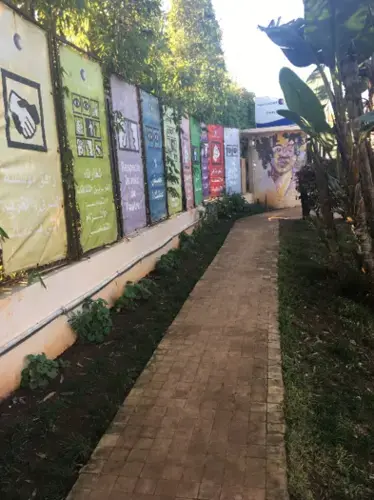
When asked if they wanted to return home, Omar answers decisively. “I lost everything. What is there to go back to?” Al-Aziz on the other hand, wants to return to Niger one day. Regardless, both of them would leave Morocco if given the chance. It does not feel like a home.
What makes their predicament all the more odd is how connected they are to the wider world through the internet. In Morocco, cell service is inexpensive, WiFi is not too hard to find, and cheap phones are a common commodity. Often people will share a device and the price for cell service between them, and it is a simple way to stay connected to people or to distract from reality. Al-Aziz and Omar have Facebook and Instagram accounts, the whole of the internet is at their fingertips, but that does not change their reality. They are still stuck in a country that feels foreign, discriminatory, and the antithesis of home.
They remain relentlessly hopeful. A self-described creative, Al-Aziz loves movies and hopes to be able to take a cinematography class. Omar wants to join the UN Blue Helmets, an international peacekeeping force, but he has to wait until he is at least 18 before he can apply.
They compare their situations to the old proverb about giving a man a fish versus teaching him to fish. They have already received their fish, now they need some form of empowerment, some more effective tools to be able to provide for themselves. “Nothing is changing,” Omar says. “People are listening, but it is a cycle that just goes in a circle. I keep hoping something will happen or something will change, but I am still waiting.”


